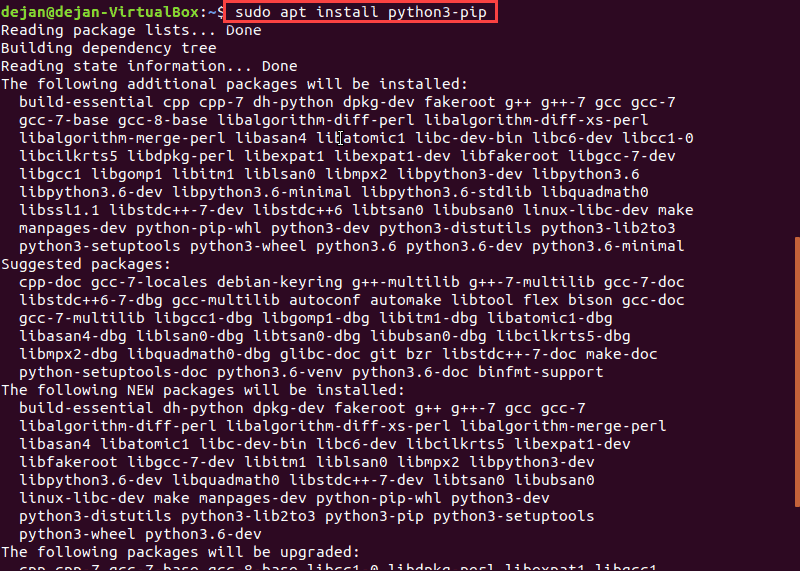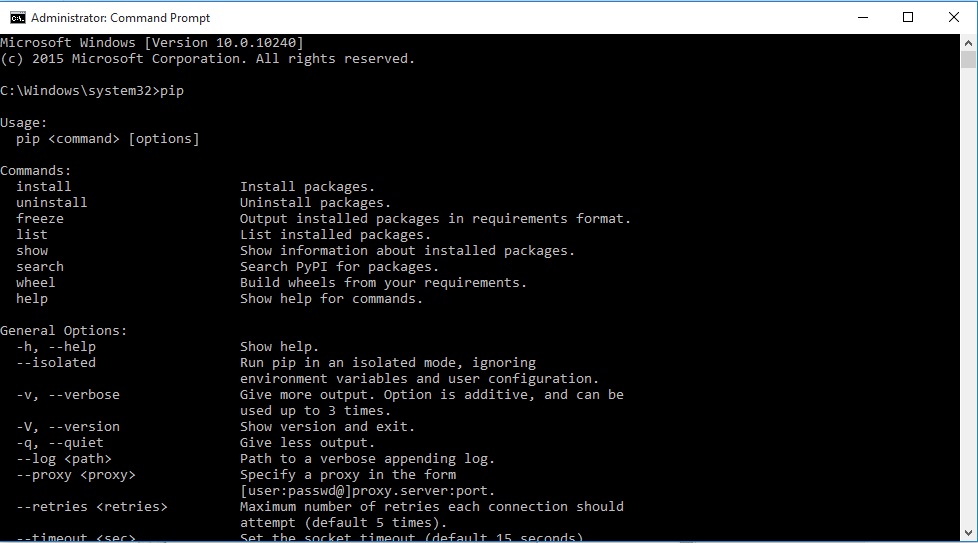

When you are working with Python 3, use pip3 instead of pip.
BREW INSTALL PIP3 CODE
You should try to move your code over to a codebase that supports Python 3. Install Install with pip (recommended) Install from brew (OSX) Install from AUR (Arch Linux) Install the binaries Initial configuration Install from. This means Python 2 is no longer being actively maintained or changed. Installing OSX binary wheels If you are using Python from Homebrew, or Macports, then you can use the standard pip installer to install Matplotlib binaries in the form of wheels. You must have pip installed on your system before you can install packages. On Mac, you do not need to worry about installing pip manually, as long as you are working with Python 3.x.Ī command not found error is raised on Linux if there is no command on the system by the name you have referenced. This means you must install pip separately from Python. On Linux, the pip package manager is an independent package.

Using base prefix '/Library/Frameworks/amework/Versions/3. Pythonpip3pip3 pip3 install-upgrade pip 6. Running virtualenv with interpreter /Library/Frameworks/amework/Versions/3.6/bin/python3

Notice the use of pip3, and not pip, unlike this link, pointed to by TensorFlow.Īnd now creating the virtual environment works: $ virtualenv -system-site-packages -p python3. Installing collected packages: virtualenv
BREW INSTALL PIP3 UPDATE
virtualenv -system-site-packages -p python3. Make sure you can install the following pip packages: ecdsa, fastecdsa, sympy (using pip3 install ecdsa fastecdsa sympy). To update them pip3 install -upgrade pip setuptools wheel You can install Python packages with pip3 installLs: /usr/local/bin/virtualenv: No such file or directoryĪnd then install it again with pip3: $ pip3 install virtualenv Step 1: Verify the python version: python3 -version Step 2: Verify if the brew is installed: brew -version Step 3: Create the virtual environment: brew install virtualenv Step 4: After creating a new virtual environment, create a. venv Then I tried installing TensorFlow with pip install -upgrade tensorflow but it failed because TensorFlow is not yet compatible with Python 3.7.
I've tried uninstalling virtualenv with both pip and pip3 and I get: Skipping virtualenv as it is not installed.Īfter a few hours, one solution was to install virtualenv again with pip, then remove it with pip: $ ls -la /usr/local/bin/virtualenv brew install python3 Then, the pip or pip3 is installed automatically, and you can install any package by pip installrwxr-xr-x 1 user brew 232 29 Nov 17:06 /usr/local/bin/virtualenv One of the advantages of installing the homebrew version of python is, you can easily. So the virtualenv link to the executable lists the newest Python version, even after removal.įurthermore, virtualenv lists brew as the user group, which is also confusing: $ ls -la /usr/local/bin/virtualenv Alternatively, you can install pip3 using the following command:. Library/Frameworks/amework/Versions/3.6/bin/python3

bash: /usr/local/bin/virtualenv: /usr/local/opt/python/bin/python3.7: bad interpreter: No such file or directory But running the same virtualenv command now fails: $ virtualenv -system-site-packages -p python3. So I removed Python 3.7 with brew remove python and installed 3.6.7 from an installer. Then I tried installing TensorFlow with pip install -upgrade tensorflowīut it failed because TensorFlow is not yet compatible with Python 3.7. Then I was able to create a virtual environment with: virtualenv -system-site-packages -p python3. I installed Python, pip3, and virtualenv as in this guide for TensorFlow: brew install python


 0 kommentar(er)
0 kommentar(er)
